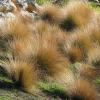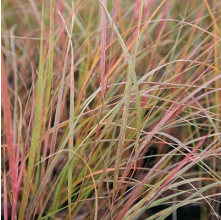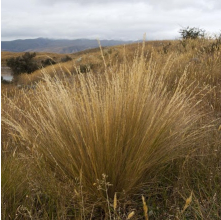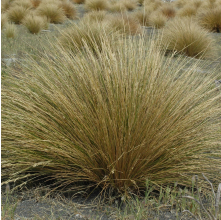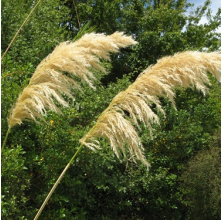Chionochloa rubra
(Red Tussock)
Chionochloa rubra
(Red Tussock)
Prices:
| Each | 20 or more | |
|---|---|---|
| 1.5L Pot | $9.50 | $9.00 |
Details:
| Type: | Grass |
| Growth Rate: | Medium |
| Mature Height: | 1 m |
| Mature Width: | 1 m |
| Site Condition: | Exposed, Frost Tolerant, Heavy Soil, Loamy Soil, Sandy Soil |
| Sun: | Full Sun, Part Shade |
| Drainage: | Moist, Wet |
| Frosts: | Hardy |
| Features: | Attractive to insects. Rongoa. Flower colour: Tawny. Foliage colour: Red. Fruit colour: Tawny. Native. Suitable restoration species. |
Chionochloa rubra, commonly known as Red Tussock grass, is a species of tussock that is native to New Zealand. It is a perennial grass that belongs to the Poaceae family and is known for its distinctive appearance and ecological importance.
Chionochloa rubra forms large, dense tussocks that can reach heights of up to 1.5 meters tall, although some specimens can grow taller in favorable conditions. The leaves are long, narrow, and stiff, with leaf edges are often rolled inward, giving them a tubular appearance. The tussocks are often reddish-brown at the base, which gives the species its common name "red tussock."
Chionochloa rubra plays a vital ecological role in New Zealand's ecosystems. The dense tussocks provide shelter and nesting sites for native birds. The tussocks also help prevent erosion by stabilizing soil with their extensive root systems, and they can trap and store snow, which helps regulate water flow in alpine catchments. Additionally, Chionochloa rubra is an important food source for native insects and other herbivores, and it contributes to nutrient cycling in the ecosystem.
Red tussock is a most adaptable vegetation which will grow in the exposed and windy environment. It can tolerate low-nutritious, and also can grow in relatively wet or dry soil conditions. It is harsh enough to use one individual specimen plant however, if space allowed, would be better for planted several as a group. Red tussock is a useful vegetation for helping to reestablish wildlife habitat, especially useful as a buffer plant around wetland areas.
Habitat: Subalpine to alpine (rarely upper montane). Often the dominant of tussock grassland, also found within shallow bogs or fringing the margins of deeper bogs and small ponds, tarns and slow flowing streams. Occasionally in canopy gaps in upper montane forest or within subalpine scrub.
Flowering: Spring [October - December]
Fruiting: Summer [November - May]
My Lists: DrainField, Erosion Control, Pioneer Species
Plant Calendar:
| Jan | Feb | Mar | Apr | May | Jun | Jul | Aug | Sep | Oct | Nov | Dec |
|---|---|---|---|---|---|---|---|---|---|---|---|
| Flowering | Fruiting | Both | |
| Key |
| Fruit | Seed | Nectar | |
| Key | F | S | N |

